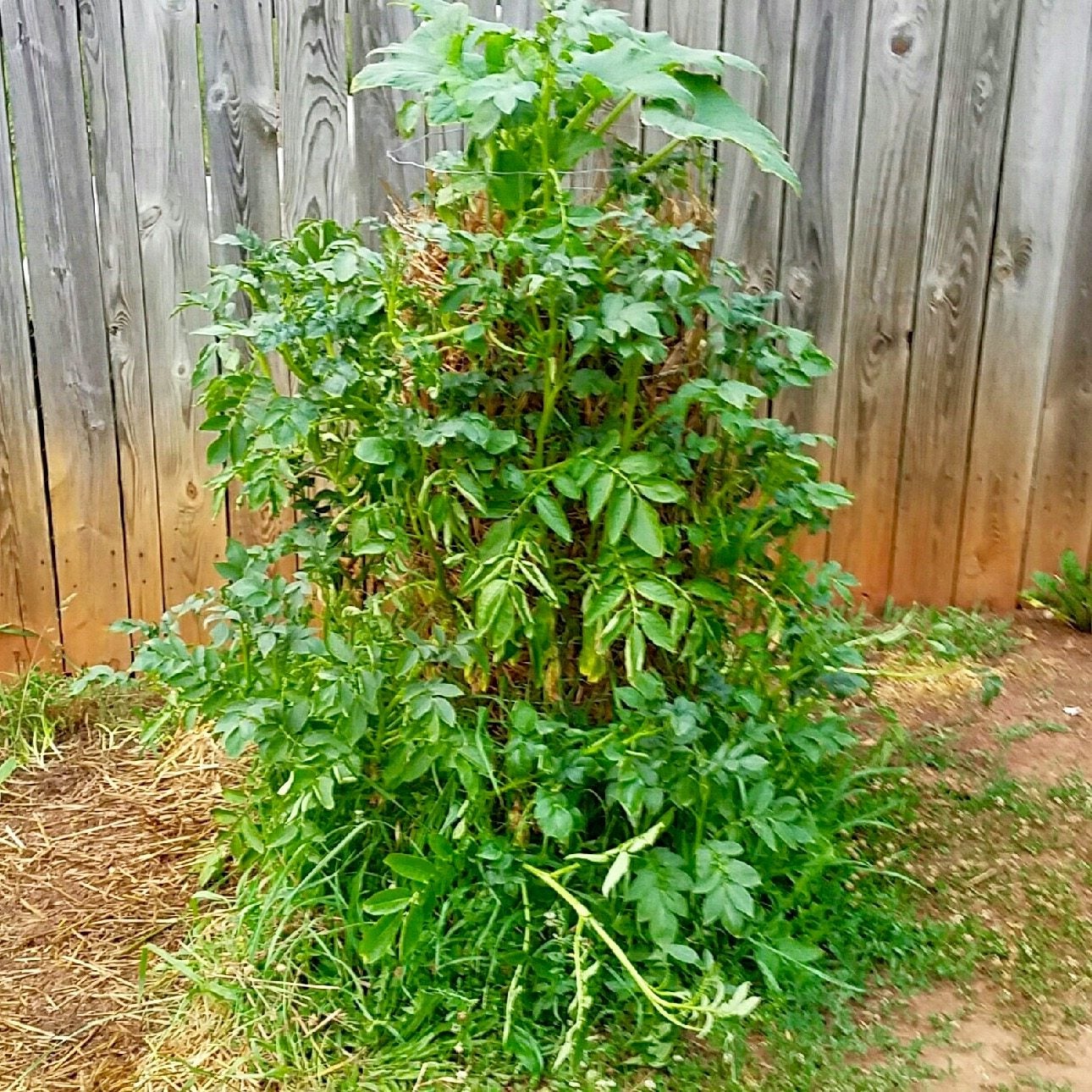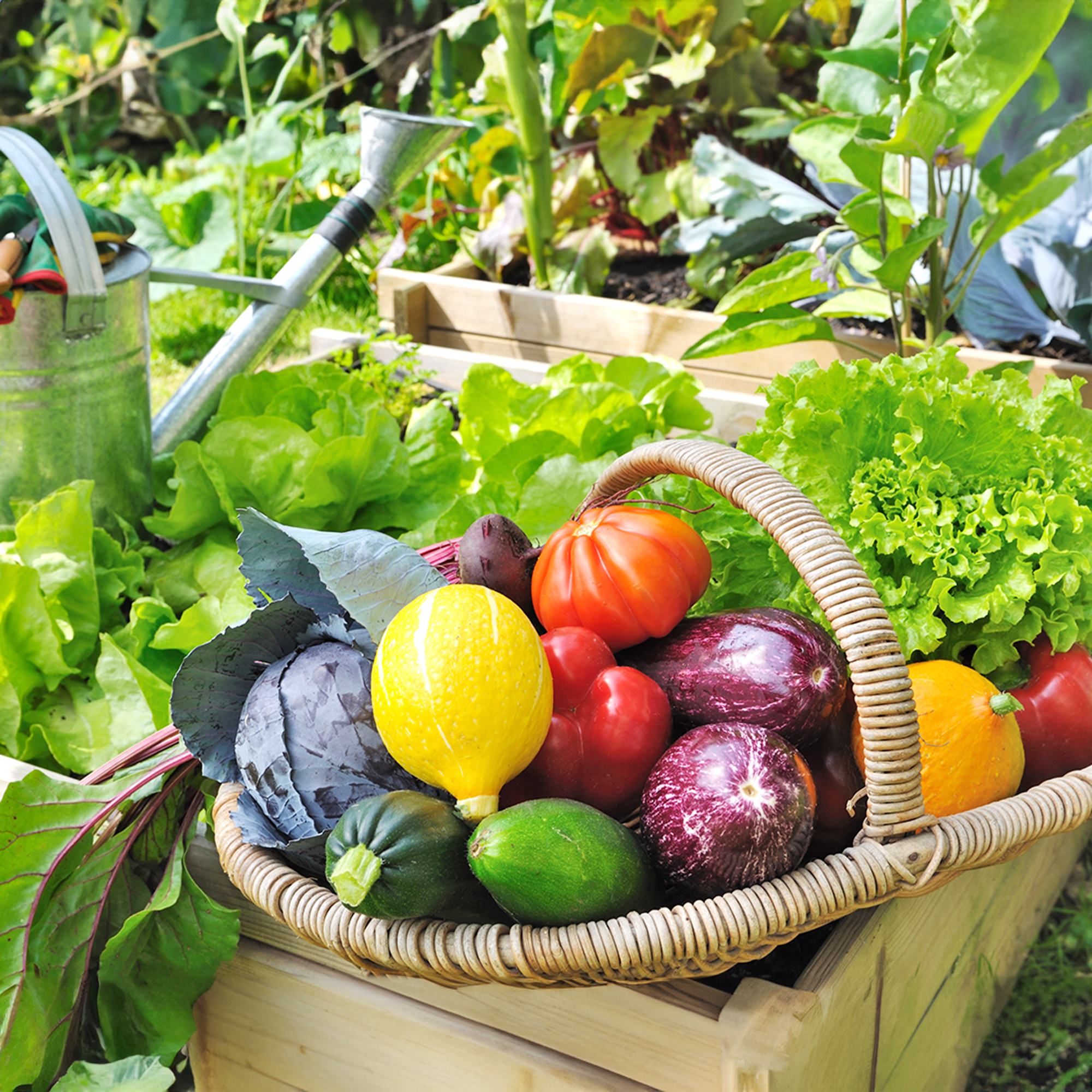Potato Tower Instructions – Tips On Building A Potato Tower

Urban gardening sites are all aflutter with a new way to grow potatoes: a DIY potato tower. What’s a potato tower? Homemade potato towers are simple structures easy to construct that are perfect for the home gardener with little gardening space or just wants to maximize existing space. Building a potato tower isn’t daunting, almost anyone can do it. Read on for step-by-step potato tower instructions.
What is a Potato Tower?
Potatoes are easy to grow, nutritious, and have the added benefit of a lengthy shelf life. Unfortunately, the traditional method for growing potatoes requires quite a bit of space, which may be a challenge for some folks. Homemade potato towers are the perfect solution. Usually, from 2 to 4 feet (61 cm. to 1 m.) in height, these simple constructions are cylinders of metal fencing that have been lined with straw and then filled with soil.
Potato Tower Instructions
Before you gather the materials needed for your DIY potato tower, pick a location for it in the garden. Pick an area that is in full sun and having easy access to water. Next, purchase your certified seed potatoes; choose a variety that is suited to your region. Mid to late season varieties work best in potato towers. Late season tubers are optimal, as they send out rhizomes and form tubers later which work best for the layered effect of a potato tower. One pound (453 g.) of large potato seed stock may yield up to 10 pounds (4.5 kg.) and one pound (453 g.) of fingerlings up to 20 pounds (9 kg.). Once you have your seed potatoes, amass the materials needed for building a potato tower. You will need:
- wire fencing or chicken wire, approx. 4 ½ feet (1 m.) long and 3 ½ feet (1 m.) high
- three 4 foot (1 m.) long rebar stakes
- one 3 ½ foot (1 m.) length of 4 inch (10 cm.) perforated PVC pipe with a cap
- zip ties
- two bales of straw (not hay!)
- one large bag of aged compost or chicken manure fertilizer
- needle nose pliers
- heavy mallet
- shovel
Pull the fencing into a circle and secure the ends with zip ties or twist the wires together to form a cylinder that is 18 inches (46 cm.) across. Put the cylinder in the area you want it and anchor it down by weaving the rebar stakes through the metal fencing. Pound the rebar down about 6 inches (15 cm.) into the ground to really secure the potato tower. Place the PVC pipe in the center of the tower. Now, begin filling in the tower. Line the bottom of the tower with a 4 to 6 inch (10-15 cm.) ring of straw that is built up 6 to 8 inches (15-20 cm.) high in the tower. Fill in the straw ring with a layer of garden soil mixed with the aged compost or chicken manure fertilizer. (Some people dispense with any soil and plant using only straw, and still others make their ring out of leaves or newspaper.) Now you’re ready to plant the potatoes. Cut the seed potato into pieces with each piece having two to three sprouting eyes (chits). Plant the potatoes around the edges of the tower, spacing them 4 to 6 inches (10-15 cm.) apart with the sprouting eyes pointing out towards the wire fencing. You can also plant a couple in the center of the tower if spacing allows. Create another straw ring on top of the seed potatoes just as before and fill it with soil and fertilizer. Plant another batch of seed potatoes and repeat the entire process – layering potatoes, straw, and soil until you get to about 4 inches (10 cm.) from the top of the tower. Be sure not to bury the PVC pipe, leave it sticking out at the top but cover it with straw. The pipe has a very important function. Potatoes love water and the pipe will be the method by which you keep them irrigated. Soak the tower with water. Fill the pipe to create a reservoir of sorts that will slowly leach out into the tower (some people even add a few holes down the length of the pipe prior to installation-- this is optional). Cap the pipe to keep mosquitoes and clogs at bay. Keep in mind that there are several variations on building a DIY potato tower, but this one is pretty comprehensive. Feel free to experiment and make it your own, or in general, whatever works best for you. For each potato placed in the tower, expect about 10 potatoes to grow. That should give you a pretty good idea based on your family size of how many potato towers you will need to construct. Lastly, if you think your potato towers aren’t decorative enough, you can pretty them up by covering them with bamboo screening, easy to find at the local home improvement store. Additionally, you can plant flowers or other low-growing companion plants in the top of your tower.
Gardening tips, videos, info and more delivered right to your inbox!
Sign up for the Gardening Know How newsletter today and receive a free copy of our e-book "How to Grow Delicious Tomatoes".

Amy Grant has been gardening for 30 years and writing for 15. A professional chef and caterer, Amy's area of expertise is culinary gardening.
-
 15 Best Vegetables To Plant In May For A Summer Bounty Of Fresh Homegrown Produce
15 Best Vegetables To Plant In May For A Summer Bounty Of Fresh Homegrown ProduceGet planting your dream garden with these best vegetables to start in May – including options for direct sowing, indoor seed-starting, and planting seedlings.
-
 Native Hydrangea Varieties In North America – 8 Sensational Smooth And Oakleaf Varieties For Hardy Blooms And Multi-Season Beauty
Native Hydrangea Varieties In North America – 8 Sensational Smooth And Oakleaf Varieties For Hardy Blooms And Multi-Season BeautyHydrangeas are beloved for their enduring visual dynamics – but if you go native, they’re even better. Here are the most captivating native hydrangea varieties you can grow